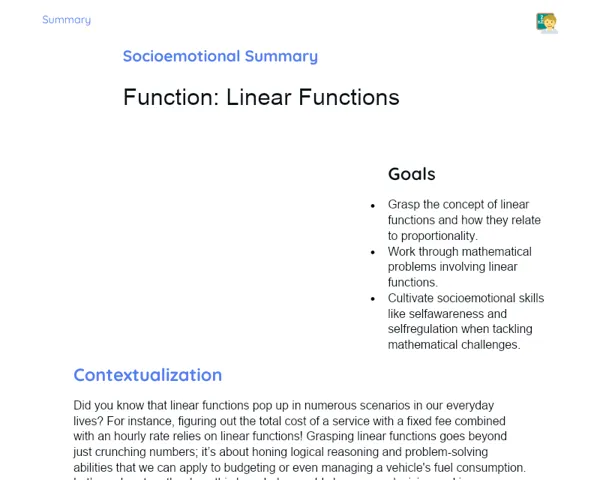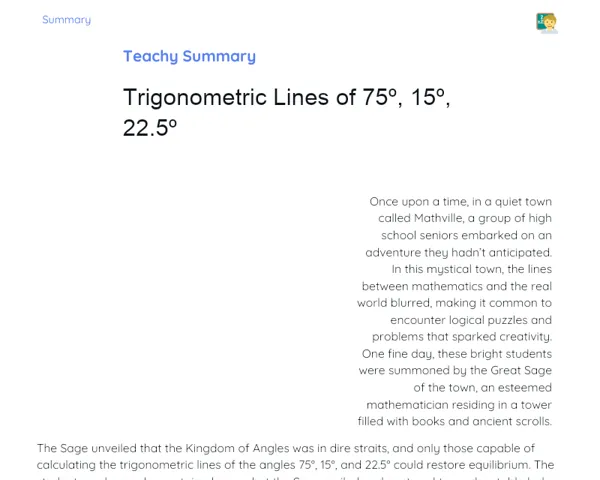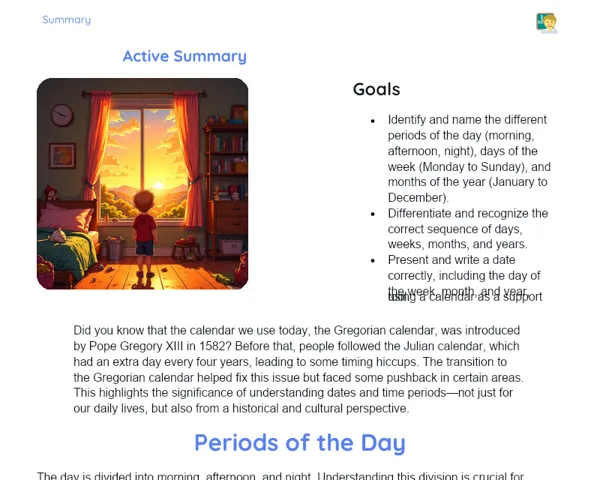Objectives
1. Grasp the essential concept of Cartesian coordinates, distinguishing between x-coordinates and y-coordinates.
2. Cultivate practical skills to determine the coordinates of points on a Cartesian plane.
3. Utilise knowledge of Cartesian coordinates in everyday situations, boosting spatial reasoning and problem-solving abilities.
Contextualization
Did you know that the Cartesian coordinate system we often use in maths was invented by the thinker and mathematician René Descartes? He developed this system while lying in bed, observing a fly on the ceiling, and realised he could describe the fly's location using just two numbers. This sparked the creation of one of the most important mathematical tools employed across various fields, from engineering and architecture to computer programming. Descartes used his system to transform the study of geometry and paved the way for the development of calculus, demonstrating that mathematics can originate from simple observations of our surrounding world.
Important Topics
x-coordinate
The x-coordinate is one of the building blocks of the Cartesian coordinate system, representing the horizontal distance of a point from the origin. It's essential for pinpointing the position of points on a plane, helping us figure out how far an object is situated to the right or left of the origin.
-
In maths, the x-coordinate is typically linked to the horizontal axis, marked as the x-axis. This axis splits the plane into areas to the right and left of the origin, making it simpler to locate points.
-
The x-coordinate is vital for tasks in geometry, navigation, and engineering, where accuracy in placing objects or points is critical.
-
If you're navigating through a maze game, the x-coordinate helps indicate how many 'steps' you need to move left or right to reach your goal.
y-coordinate
The y-coordinate is the second component of the Cartesian coordinate system and signifies the vertical distance of a point from the origin. This measure is pivotal for determining the position of points on the vertical plane, allowing us to know if an object is above or below a reference point.
-
Generally, the y-coordinate is associated with the vertical axis, known as the y-axis. This axis divides the plane into regions above and below the origin, which is essential in many practical applications and games.
-
In construction, precise vertical coordinates (y-coordinates) are employed to ensure that structures are built at the correct height, preventing costly and dangerous mistakes.
-
In a more playful context, like video games, the y-coordinate can show the height at which a character or object is positioned in the game.
Cartesian Plane
The Cartesian plane is the two-dimensional geometric space where Cartesian coordinates are plotted. It comprises two perpendicular axes, the x-axis (x-coordinates) and the y-axis (y-coordinates), which cross at the origin. This system lays the groundwork for pinpointing points in a 2D space.
-
The Cartesian plane was a groundbreaking innovation in maths, as it allows for the graphical representation of functions and mathematical relationships, making concepts easier to grasp and visualise.
-
It's widely used in physics to represent vectors, in economics for supply and demand graphs, and in many other disciplines to model and tackle problems.
-
Understanding how the Cartesian plane operates is crucial for learners of all ages, as it sets the stage for studying geometry, algebra, and other branches of maths.
Key Terms
-
Cartesian Coordinates: A system that describes the position of points in a two or three-dimensional space using pairs of numerical values to reflect the x-coordinate and y-coordinate.
-
x-coordinate: The coordinate that indicates the horizontal distance of a point from the origin.
-
y-coordinate: The coordinate that signifies the vertical distance of a point from the origin.
-
Cartesian Plane: A geometric setup consisting of two perpendicular axes, the x-axis and the y-axis, which intersect at the origin, allowing for the visual representation of coordinates.
For Reflection
-
How do you believe understanding Cartesian coordinates can aid in tackling everyday problems outside the realm of mathematics?
-
Consider a scenario like a theme park. How could Cartesian coordinates assist in plotting the placement of attractions efficiently?
-
Why is it critical for an engineer or architect to have a solid grasp of Cartesian coordinates? Provide examples of how they might utilise this knowledge in their projects.
Important Conclusions
-
In this summary, we delved into the intriguing world of Cartesian coordinates, which are vital for locating points on a plane using x-coordinates and y-coordinates—concepts that are deeply embedded in various practical situations in our daily lives.
-
We learned how René Descartes, the illustrious philosopher and mathematician, developed this system while noticing a fly on his ceiling, showcasing how remarkable discoveries can stem from uncomplicated observations.
-
We discussed real-world applications, from engineering to computer programming, where knowledge of Cartesian coordinates is fundamental, accentuating the importance of this topic in the present and future contexts of many professions.
To Exercise Knowledge
- Treasure Hunt with Coordinates: Organise a game with your family or friends where you hide a 'treasure' and share the coordinates for them to discover it. 2. Neighbourhood Map: Sketch a small map of your street or neighbourhood and use coordinates to mark significant spots like friends' houses or favourite hangouts. 3. Create Your Maze: Design a simple maze and challenge someone to find their way out using only directions in Cartesian coordinates.
Challenge
🚀 Junior Engineer Challenge: Use recycled materials to construct a model of a small city. Position buildings, roads, and parks using Cartesian coordinates, so one can navigate through it. Present your model and explain how the coordinates aid in urban planning.
Study Tips
-
📖 Use Educational Apps: There are plenty of entertaining apps available that help practise Cartesian coordinates through interactive games and challenges. Explore to find one that suits your learning style.
-
🌐 Explore Online Resources: Educational websites offer videos, tutorials, and interactive exercises that can deepen your understanding of Cartesian coordinates and their application in the real world.
-
✏️ Practice Drawing: Grab some graph paper and draw different shapes, placing them using Cartesian coordinates. The more you practise, the more instinctive it becomes to use the coordinates.



